Presentation
Without pain PR bleeding.
Patient Data
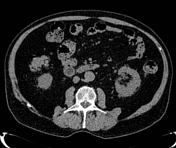

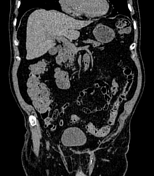

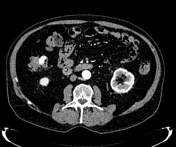

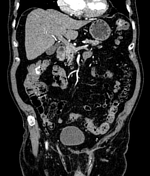

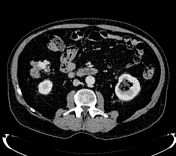

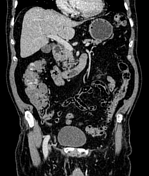

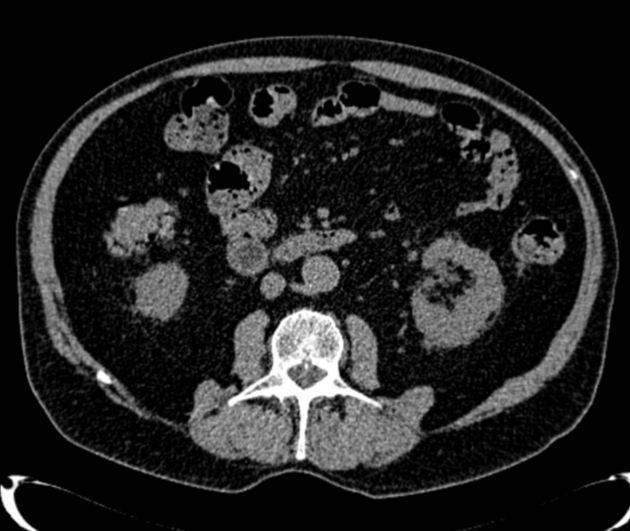
In the arterial phase is active extravasation of contrast into the large bowel lumen from the left side ascending colon wall. There is no colon malignancy seen.
Case Discussion
Bleeding from the lower GI tract is quite common and accounts for 20% to 30% of all patients with massive gastrointestinal bleeding. The incidence is higher in older patients and patients taking multiple drugs or selling multiple pharmacies.
CT angiography is fast, noninvasive, and widely available. CT angiography allows detection of the bleeding rate from 0.3 to 0.5 ml/min. However, it has a relatively low sensitivity (85%). Colonoscopy has been shown to correctly identify the source of lower gastrointestinal bleeding in more than 75% of patients and also allows for a therapeutic approach.




 Unable to process the form. Check for errors and try again.
Unable to process the form. Check for errors and try again.